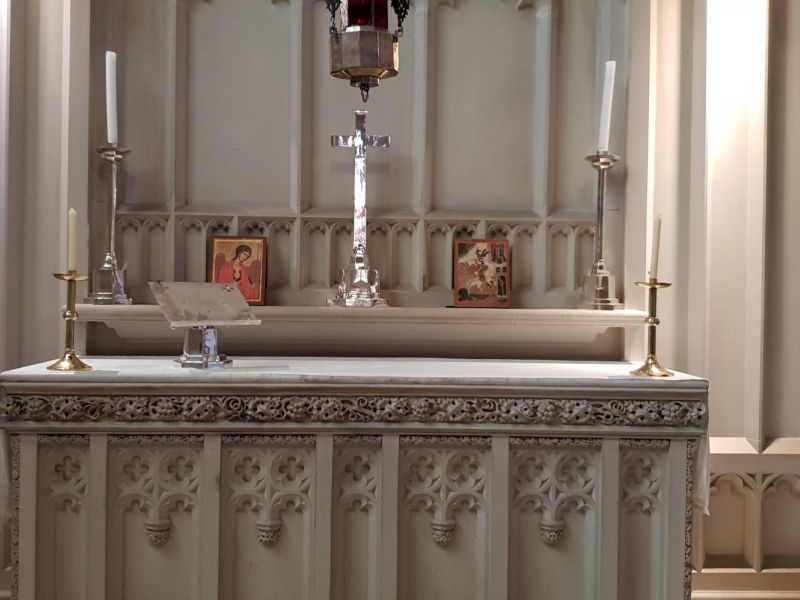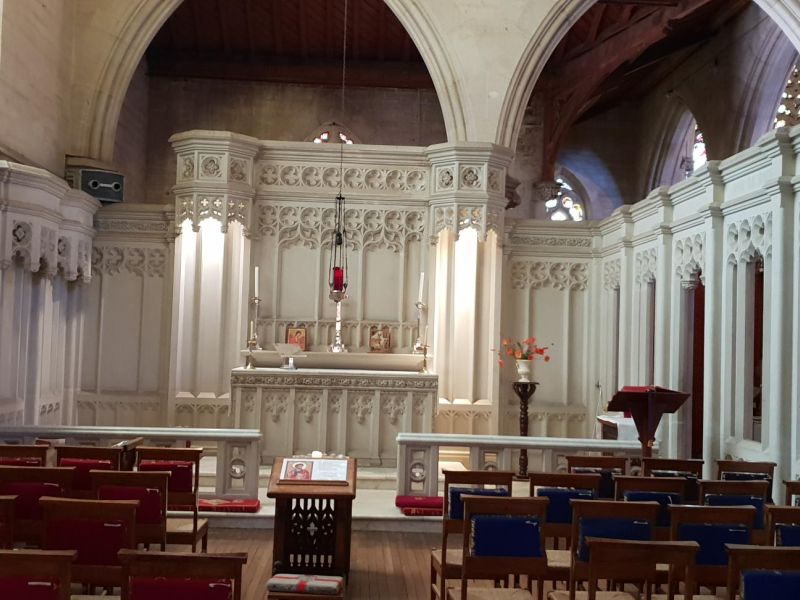St George and St Michael Soldiers Chapel within the Saviours Cathedral
The St George and St Michael Chapel, colloquially known as the Soldiers Chapel was constructed and completed in 1922.
This was the same year that construction on the Australian War Memorial started. The Soldiers Chapel comprises of sandstone quarried from the same quarries as the Australian War Memorial and a number of stonemasons who worked on the Soldiers Chapel would also work on the Memorial.
The Cathedral itself, belonging to the Goulburn-Canberra Anglican Arch-Diocese, contains the nine hundred and nineteen names of every Anglican serviceperson killed during the Great War 1914-1919. It covers an area from Wagga Wagga in the west, Bryon Bay to the east, Goulburn to the north and Albury to the south. Each of the honour rolls span thirty-eight names by three columns, arrayed by town or district in alphabetical order as they existed in 1922, starting with Goulburn as the Cathedral City.
Compared to the Australian War Memorial, the Soldiers Chapel only records those who died in battle within the years of active conflict (1914-1919) and does not include those who died of their wounds after the fact.
Along the outside of the Chapel is engraved THE CHAPEL OF S MICHAEL AND S GEORGE ERECTED TO THE GLORY OF GOD AND IN MEMORY OF THE SONS OF THE CHURCH IN THIS DIOCESE WHO GAVE THEIR LIVES IN THE GREAT WAR 1914-1919.
Along the outer interior wall (left hand side facing the Altar) above the rolls of honour is engraved a portion of the Requiem Mass GRANT UNTO THEM O MERCIFUL LORD ETERNAL REST AND LET EVERLASTING LIGHT SHINE UPON THEM.
On the opposing (right) side is engraved a quote from Christian writer John Bunyan: "And so they passed over and all the trumpets sounded for them on the other side."

 RossManuel
RossManuel